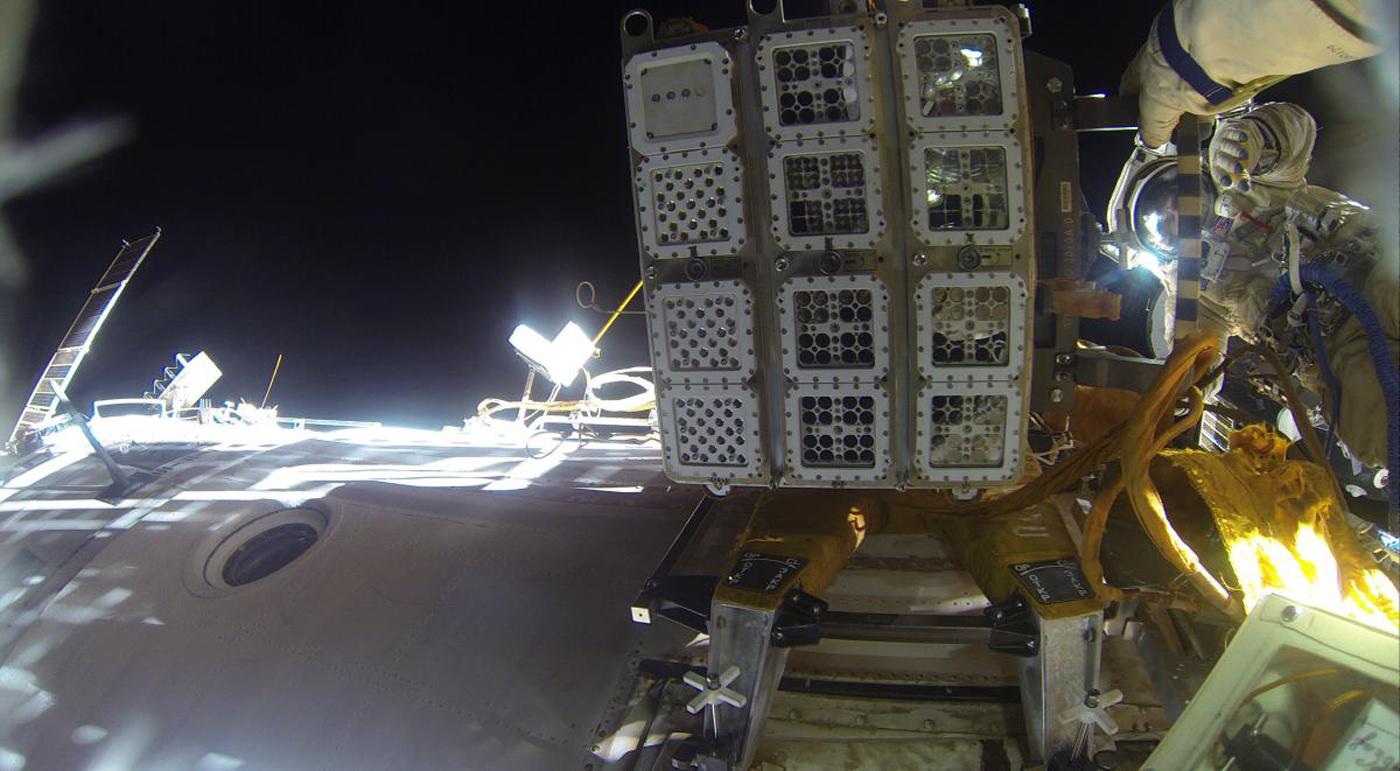New research on the evolution of organic compounds upon exposure to space radiation.

After 18 months mounted externally on the International Space Station Zvezda module, the European Space Agency Expose-R2 Photochemistry on the Space Station (PSS) experiment was retrieved by cosmonauts during a February spacewalk. The PSS experiment investigated the evolution of organic compounds upon exposure to space radiation.
Led by University of Paris-Est Créteil investigator Herve Cottin, the PSS experiment involved a team of 30 Co-Investigators from 11 laboratories in the Netherlands, Italy, France, and the USA – including Richard Quinn of the SETI Institute.
Explained by Cottin, “Expose is nothing less than a little chemistry box to help us better understand chemical reactions in space. If a molecule survives 18 months in space then it could come to Earth from space. If a molecule has changed after its 18-month voyage then we know that space travel filters our observations on Earth and a chemical might have formed from a different configuration.”
The PSS samples returned to Earth in a Soyuz-44 capsule along with Astronaut Scott Kelly returning after his year in space and landed in Kazakhstan on March 2, 2016. The landing was carried live on NASA television and video of the PSS removal taken during the February spacewalk is also available on its website.
According to the French Space Agency website the samples were then sent to Cologne, Germany, and then to Créteil. They will be extracted from the sample carriers and referenced before being sent again to other European cities and their laboratories of origin. They will be analyzed in the same conditions as before their departure and compared to the samples that stayed on Earth.
All tests are expected to be completed by October 2016.

Figure 1 Expose-R2 and the PSS experiment imaged during a February 2016 EVA (Image from NASA/ESA)
Richard Quinn
Senior Research Scientist
Is the surface of Mars really sterile, or could there be still-undiscovered traces of life littering this hostile landscape? Chemist Richard Quinn focuses on understanding the reactive processes that take place on the surface of the Red Planet, and how these might give a better idea of the potential for habitable environments. As the Viking landers found three decades ago, there is an abundance of complex, photochemically driven oxidative processes on Mars. These are comprised of atmosphere, dust, and soil interactions. Richard says that the key to understanding martian carbon chemistry is to unravel the dominant reaction mechanisms and kinetics of soil reactivity and organic compound decomposition. More Info.





